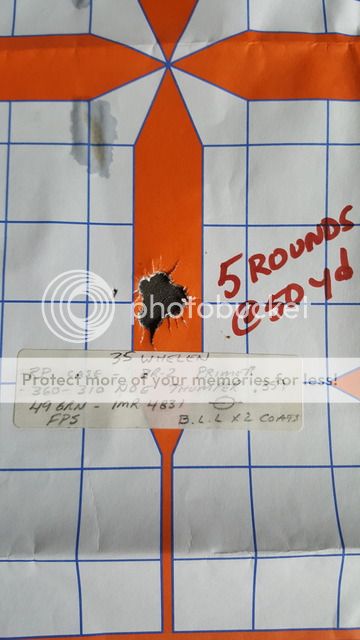Ian
Notorious member
The tip-over trick works with brass, but the quench has nothing to do with the annealing, it just STOPS the annealing up at the neck when you get it just right. Torching the noses should work if you DON'T tip them over, just let the bullet's temperature naturalize.
Lead/antimony alloys have a "natural" hardness state based on the common bullet caster's reference of dropping them from the mould onto a towel and allowing them to air-quench in a "room temperature" environment. Further precipitation hardening usually occurs after that time, taking from weeks to months to stabilize. Tin slows the process, and depending on a lot of little details can affect the final hardness as well due to cross-linking with the antimony and precipitating dendrites of a different shape.
So we have an "as cast" toughness, an "aged, air cooled" toughness, and then we can monkey with the cooling rate from near-molten to achieve weaker or tougher final outcomes, but regardless, final BHN takes time to achieve.
I've annealed wheel-weight bullets to attempt to soften them and had good success. I did a maximum re-heat without slump and just dialed the oven back bit by bit over the course of something like an hour IIRC and finally just turned it off and left them to cool down with the unit overnight. They gained back a few points of hardness over months, but remained softer than they were simply air-quenched from the mould as cast.
Same thing with water-quenching, WW alloy will get super-hard in a few weeks and anneal some after it peaks out, but generally is very much more tough than air-quenched. This can be controlled very closely as Rick and many others have demonstrated repeatedly.
The takeaway here is lead/antimony alloy can be manipulated by the factors of rate of cooling from a near-slump state to room temperature and time. The monkey wrenches that often make us have different results from each other probably involve the presence/amount of grain refiners, specific techniques and test equipment, and really not knowing most of the time what is actually in our bullet metal.
Lead/antimony alloys have a "natural" hardness state based on the common bullet caster's reference of dropping them from the mould onto a towel and allowing them to air-quench in a "room temperature" environment. Further precipitation hardening usually occurs after that time, taking from weeks to months to stabilize. Tin slows the process, and depending on a lot of little details can affect the final hardness as well due to cross-linking with the antimony and precipitating dendrites of a different shape.
So we have an "as cast" toughness, an "aged, air cooled" toughness, and then we can monkey with the cooling rate from near-molten to achieve weaker or tougher final outcomes, but regardless, final BHN takes time to achieve.
I've annealed wheel-weight bullets to attempt to soften them and had good success. I did a maximum re-heat without slump and just dialed the oven back bit by bit over the course of something like an hour IIRC and finally just turned it off and left them to cool down with the unit overnight. They gained back a few points of hardness over months, but remained softer than they were simply air-quenched from the mould as cast.
Same thing with water-quenching, WW alloy will get super-hard in a few weeks and anneal some after it peaks out, but generally is very much more tough than air-quenched. This can be controlled very closely as Rick and many others have demonstrated repeatedly.
The takeaway here is lead/antimony alloy can be manipulated by the factors of rate of cooling from a near-slump state to room temperature and time. The monkey wrenches that often make us have different results from each other probably involve the presence/amount of grain refiners, specific techniques and test equipment, and really not knowing most of the time what is actually in our bullet metal.




